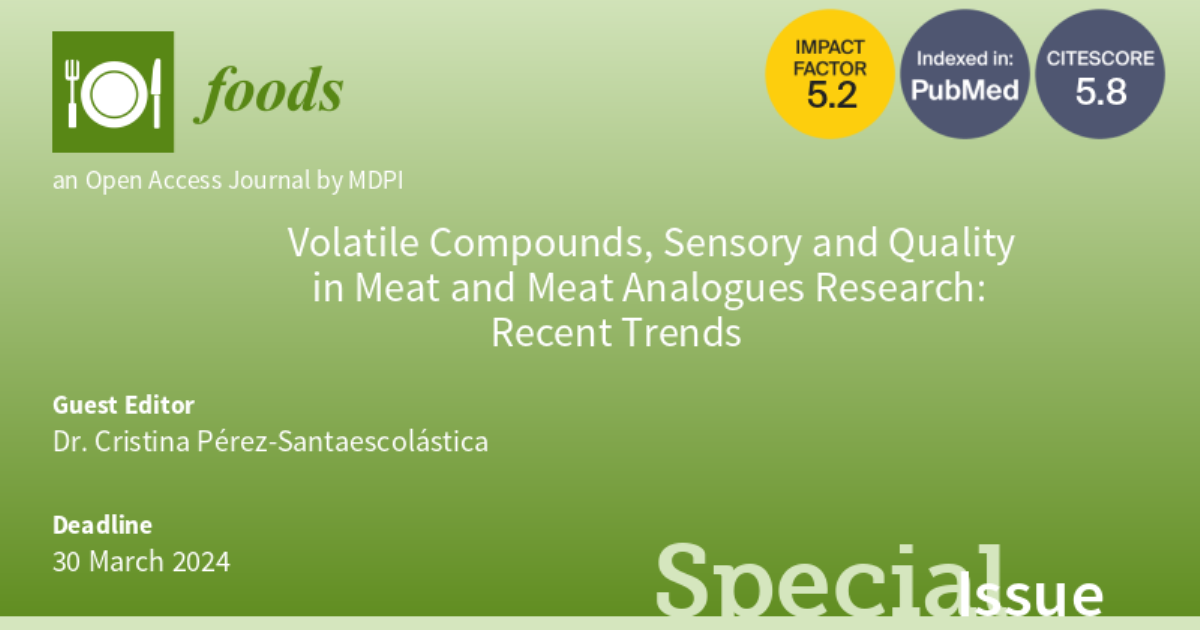Volatile Compounds, Sensory and Quality in Meat and Meat Analogues Research: Recent Trends
A special issue of Foods (ISSN 2304-8158). This special issue belongs to the section "Meat".
Deadline for manuscript submissions: closed (30 March 2024) | Viewed by 5334

Special Issue Editor
Special Issue Information
Dear Colleagues,
We are happy to invite you to submit a paper to the journal Foods for a Special Issue titled, “Volatile Compounds, Sensory and Quality in Meat and Meat Analogues Research: Recent Trends”.
Meat plays an essential role in supplying vital nutrients for human health, and its sensory properties are highly valued by consumers. However, due to the increasing demand for high-quality products and healthy alternatives, the meat industry has been forced to innovate, both technologically and in new product designs. New thermal technologies have been explored for applications in production systems, intelligent packaging has appeared, new ingredients have been investigated, and even personalised foods have been designed. Among these new products, different meat alternatives have been developed due to the increasing demand in recent decades, which is driven by ethical, environmental and health reasons.
Both research and review papers with the aim and scope of the sustainable technological advancement for meat and meat analogue quality are welcome for possible publication in this Special Issue. Topics may include:
- Novel sustainable production processes in meat, meat products and their analogues.
- Quality assessment of new recipes, including functional ingredients.
- Advancements in improving shelf life.
- Sensory attributes of innovative products.
Dr. Cristina Pérez-Santaescolástica
Guest Editor
Manuscript Submission Information
Manuscripts should be submitted online at www.mdpi.com by registering and logging in to this website. Once you are registered, click here to go to the submission form. Manuscripts can be submitted until the deadline. All submissions that pass pre-check are peer-reviewed. Accepted papers will be published continuously in the journal (as soon as accepted) and will be listed together on the special issue website. Research articles, review articles as well as short communications are invited. For planned papers, a title and short abstract (about 100 words) can be sent to the Editorial Office for announcement on this website.
Submitted manuscripts should not have been published previously, nor be under consideration for publication elsewhere (except conference proceedings papers). All manuscripts are thoroughly refereed through a single-blind peer-review process. A guide for authors and other relevant information for submission of manuscripts is available on the Instructions for Authors page. Foods is an international peer-reviewed open access semimonthly journal published by MDPI.
Please visit the Instructions for Authors page before submitting a manuscript. The Article Processing Charge (APC) for publication in this open access journal is 2900 CHF (Swiss Francs). Submitted papers should be well formatted and use good English. Authors may use MDPI's English editing service prior to publication or during author revisions.
Keywords
- organoleptic properties
- physicochemical characteristics
- alternative meat products
- functional food
- consumer preferences
- novel meat production






